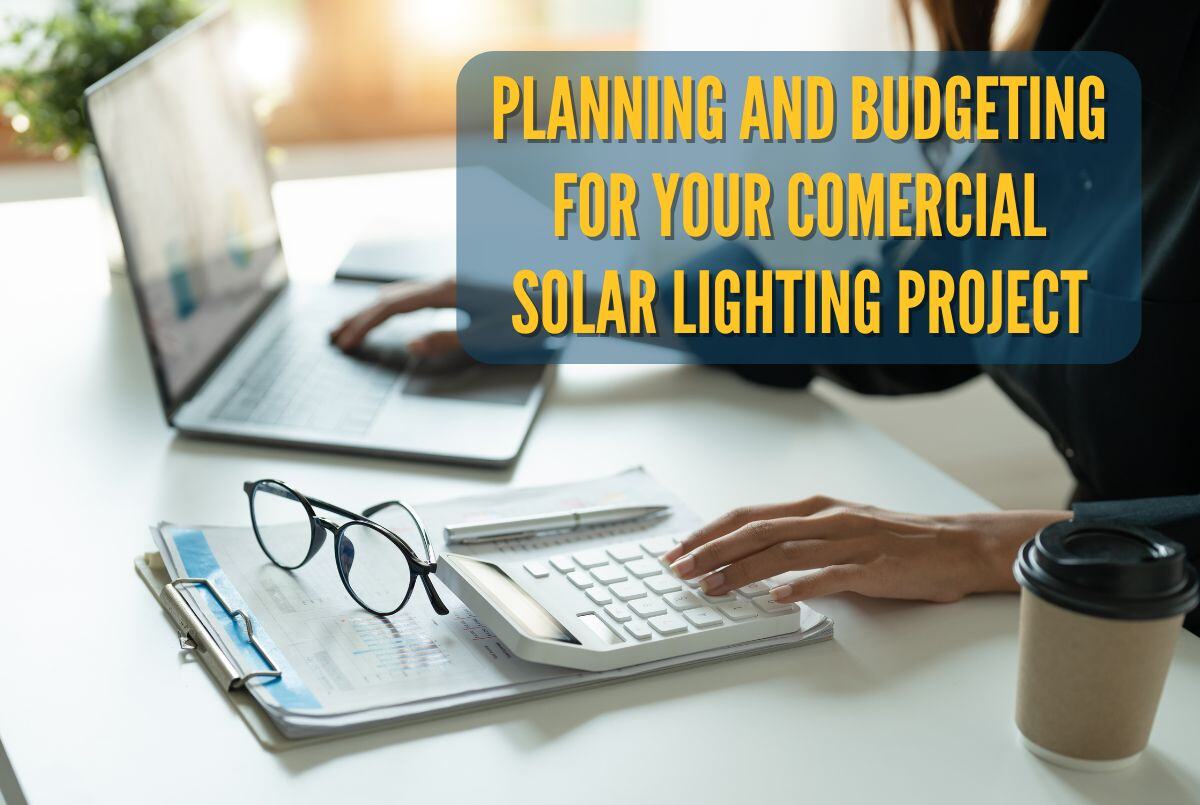Switching to commercial solar lighting is a smart investment for businesses looking to reduce energy costs, enhance sustainability, and improve outdoor lighting quality. However, like any significant project, it requires careful planning and budgeting to ensure success. Here are five key points to consider when planning and budgeting for commercial solar lighting:
1. Establish a Realistic Project Budget
The first step in any solar lighting project is to determine your budget. Commercial solar lighting systems can vary widely in cost depending on factors like the size of the project, the quality of components, and the complexity of installation.
- Key considerations:
- Equipment costs (solar panels, batteries, LED fixtures, poles, etc.)
- Installation and labor expenses
- Maintenance and monitoring costs
- Contingency funds for unexpected expenses
By setting a clear budget upfront, you can avoid overspending and ensure the project aligns with your financial goals.
2. Take Advantage of Tax Incentives and Rebates
One of the biggest advantages of investing in solar lighting is the availability of tax incentives, rebates, and grants. These financial incentives can significantly reduce the upfront cost of your project and improve your return on investment (ROI).
- What to look for:
- Federal and state tax credits for renewable energy projects
- Utility company rebates for energy-efficient lighting
- Local government grants for sustainability initiatives
Work with a financial advisor or solar lighting expert to identify and apply for all applicable incentives.
3. Break Down the Project into Phases
A well-structured project plan is essential for staying on track and within budget. Breaking the project into clear phases helps you manage costs, timelines, and resources effectively.
- Typical project phases:
- Assessment: Evaluate your site’s solar potential, lighting needs, and energy usage.
- Design: Create a customized solar lighting plan that meets your requirements.
- Procurement: Source high-quality components from reputable suppliers.
- Installation: Hire experienced contractors to install the system.
- Monitoring: Implement a system to track performance and maintenance needs.
By tackling the project in stages, you can address challenges early and ensure smooth progress.
4. Consider Short-Term and Long-Term Costs
While the upfront cost of solar lighting may seem high, it’s important to consider the long-term savings. Solar lighting systems have minimal operating costs compared to traditional grid-powered lighting, as they rely on free solar energy and require less maintenance.
- Short-term costs:
- Initial investment in equipment and installation
- Potential site preparation expenses (e.g., trenching, landscaping)
- Long-term savings:
- Reduced energy bills (solar lighting operates off-grid)
- Lower maintenance costs (LEDs and solar panels have long lifespans)
- Increased property value and sustainability credentials
By focusing on the total cost of ownership, you’ll see that solar lighting is a cost-effective solution over time.
5. Work with a Lighting Designer
Collaborating with a professional lighting designer can make a world of difference in the success of your project. A lighting designer will help you create a system that meets your specific needs while maximizing efficiency and aesthetics.
- Benefits of working with a lighting designer:
- Customized lighting solutions tailored to your site
- Expertise in selecting the right components for optimal performance
- Assistance with navigating permits, codes, and regulations
- Ongoing support for maintenance and upgrades
A lighting designer ensures your project is not only functional but also visually appealing and aligned with your brand or property’s aesthetic.
Final Thoughts
Planning and budgeting for commercial solar lighting may seem daunting, but with the right approach, it can be a smooth and rewarding process. By establishing a realistic budget, leveraging tax incentives, breaking the project into phases, considering both short- and long-term costs, and working with a lighting designer, you can create a sustainable, cost-effective lighting solution that benefits your business for years to come.
Investing in solar lighting isn’t just about saving money—it’s about making a positive impact on the environment and your community. Start planning your project today and take the first step toward a brighter, greener future.'


